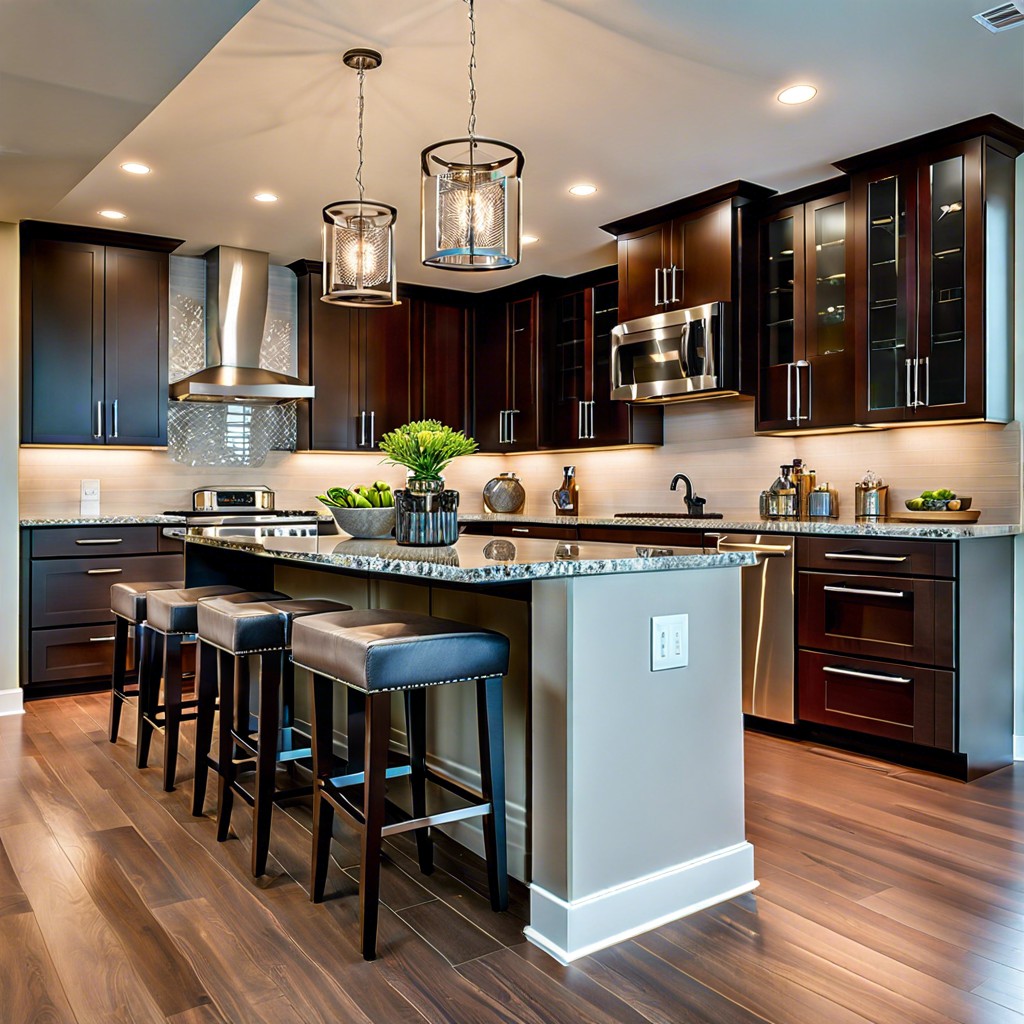Last updated on
Understanding kitchen island costs is crucial for planning your kitchen renovation, and this article breaks down the factors that affect price, from materials to installation.
Key takeaways:
- Size: Larger islands cost more due to materials and labor.
- Material: Choice affects cost, durability, and maintenance.
- Consider dimensions, traffic flow, and kitchen size when planning size.
- Choose materials based on aesthetics, durability, and maintenance.
- Prefab islands are budget-friendly, starting at 0.
What's Inside
Factors in Calculating Kitchen Island Cost

When you begin planning for your kitchen island, understanding the variables at play can significantly impact overall expenses. The two primary elements to consider are size and material.
Size: Larger islands require more materials and labor, nudging the cost upwards. If storage or seating is a priority, a bigger island may be necessary, but it’s also worth considering how the size will affect movement in the kitchen.
Material: Choices here range from laminates to high-end granite or marble. The material not only influences the aesthetic but also the durability and maintenance requirements. It’s a balance between functionality, style, and budget.
Remember, the cost is directly proportional to the scale and the quality of materials chosen. Opting for a simple, modestly sized island can lead to significant savings, while high-end materials and a considerable footprint will require a larger investment.
Size
When thinking about the size of your kitchen island, there are several key points to consider.
First, the dimensions will largely impact cost: larger islands require more materials and labor. But size isn’t just about length and width; it’s also about depth and height.
Islands that accommodate seating or incorporate appliances might need additional depth or particular heights for comfort and functionality.
Remember the kitchen’s overall floor plan as well. The island should allow for smooth traffic flow; industry standards suggest maintaining at least 42 inches of clearance on all sides for easy movement.
Lastly, consider the scale of the island in relation to your kitchen’s size. An island that’s too large for the space can overwhelm the room, while one that’s too small may not be as functional or visually appealing. The right balance will ensure your kitchen island isn’t just a statement piece but a practical addition to your home.
Material
When selecting materials, consider both aesthetics and functionality. Granite and quartz are durable and popular for countertops, yet they differ in maintenance and price, with quartz generally being pricier but less upkeep-intensive. Wood brings warmth and is easier on the wallet but requires regular sealing to prevent damage. Stainless steel offers a sleek, industrial look and is exceptionally hygienic, though it can show fingerprints and scratches more readily. Laminate is a budget-friendly option, offering a wide range of styles and colors, though it may not hold up as well over time compared to natural stone. Remember, the material affects both the cost and the longevity of your kitchen island, so choose one that meets your needs and complements your kitchen’s design.
Kitchen Island Cost By Type
Prefab islands offer an economical option with prices starting as low as $100 for the most basic models, and can reach up to $2,000 for more stylish or larger units. These off-the-shelf solutions are perfect for budget-conscious homeowners who are also looking for quick installation.
Conversely, custom-built islands are a noteworthy consideration for those desiring a tailored look to match their kitchen’s unique aesthetics or specific functional needs. Starting costs for custom islands hover around $3,000 and can inflate dramatically based on materials, design complexity, and size—sometimes exceeding $10,000.
It’s essential to balance the perks of customization against a prefab’s convenience and cost-saving benefits. Every choice along the spectrum from prefabricated to bespoke impacts the overall investment in your kitchen’s focal point. Consider the long-term value, use, and satisfaction that your island will bring into your home when deciding which type suits your culinary sanctuary.
Prefab
Opting for prefab, or prefabricated, counter islands is a budget-friendly path many homeowners choose. These units come pre-designed and are mass-produced, which significantly reduces the cost. On average, a basic prefab island can range from $100 to $2,000, depending on the size and materials.
Some key points to consider:
- Prefab islands often feature materials like laminates or stainless steel, which are cost-effective compared to stone or solid wood.
- They typically come in standard sizes and shapes, which make them a suitable pick for kitchens with a conventional layout.
- Installation is generally straightforward since the design is meant for ease of assembly, sometimes even allowing for DIY installation—which can save you on labor costs.
- The price does not usually include extra features such as bar seating or intricate storage solutions, but some models might offer these for an additional fee.
- Customizability is limited, so while prefab options are affordable, they may not perfectly match the rest of your kitchen’s aesthetics.
Prefabs are a practical solution for many, balancing cost and convenience for those looking to enhance their kitchen without a hefty price tag.




